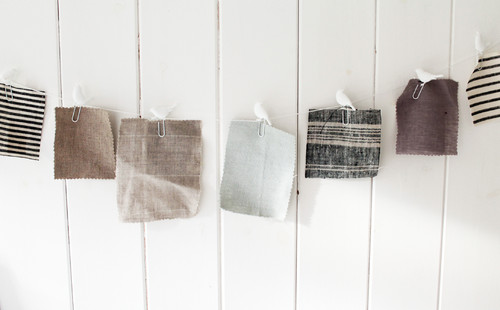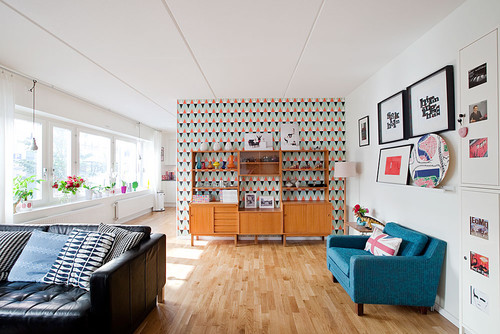Can First Time Home Buyers Use a 401k For a Down Payment?


Coming up with a down payment to purchase your first home can feel like a herculean task. How can you possibly save twenty, thirty, fifty thousand dollars—approximately 11% of your home purchase price in 2016 (National Association of Realtors)—to pour into a house? For most individuals, it can be incredibly tough to save enough, particularly if you’re strapped for cash. What can you do?
The good news is that if you’ve been consistent about saving for your retirement, you have a leg up thanks to the two 401k first time home buyer options. These options allow you to supplement your down payment with cash from your 401k. However, not everyone qualifies to use money from a 401k. There are strict rules, so it’s vital that you understand how the process works before you move forward.
Borrowing from 401k
When it comes to borrowing from your 401k to help with your down payment, there are two ways to go about it:
- Get a 401k loan for home purchase
- Make a 401k withdrawal
Each of these options comes with its own costs and rewards. Remember that everyone’s financial situation is different and the best way to make the right choice for your situation is to contact a financial advisor and a skilled real estate agent.
401k Loan
First, let’s talk about getting a 401k loan for home purchase. The good news is that, when getting a loan, you don’t owe income taxes or the 10% early withdrawal fee. The bad news is that when you take a loan, it has to be repaid with interest even if you’re just paying the money and interest back out of your own pocket.
However, unlike a typical FHA loan, borrowing from 401k is fairly limited. Your max loan is limited to a specific dollar amount OR one-half of your account balance, whichever is smaller. This means that you need to know your current vested balance.
As for repayment, your 401k loan must be repaid within five years, and payments are required on a quarterly basis—both principal and interest. And your loan payments DO NOT count as contributions to your 401k.
Please note, not all plans permit loans. You’ll need to check with your particular plan to see what is allowed. Additionally, before moving forward with this option it’s advisable to check in with a financial advisor to ensure this option is right for you.
401k Withdrawal
The second option for a 401k first time home buyer is a withdrawal. Compared to a 401k loan, it’s much simpler. The money is yours once you take it out and it does not have to be repaid. But there are a few more details. To withdrawal money from your 401k, you have to meet a few criteria including age restriction and financial hardship.
Only if your employer allows withdrawals and you can prove to the IRS that you are experiencing financial hardship can you even consider withdrawal. From there, your withdrawal has a certain dollar limit, and you must pay income tax on the full amount.
The other option for a withdrawal is to cash out on an old 401k. However, if you use this option, you’ll be required to pay both the 10% early withdrawal penalty as well as income tax.
Before you pursue this path or cross it off, be sure to get the opinion of a financial advisor who has access to your personal financial details.
401k Loan vs. Withdrawal
In most cases, a 401k loan may be easier to obtain and doesn’t come with the penalties associated with an early withdrawal. Of course, the downside is that you’ll eventually have to pay it back in five years.
So, why would you use your 401k to help purchase your first home?
Depending on your financial circumstances, this option may be more financially feasible than paying private mortgage insurance, and the interest goes back in your pocket. Another option is to use your IRA to avoid the 10% penalty. IRA withdrawals up to $10,000 are allowed without the 10% early withdrawal penalty, though you’ll still owe income tax.
If you need help figuring out the best option for you when it comes to putting together your down payment with your 401k, contact your personal financial advisor. Then contact a local Coldwell Banker office to find the perfectly priced home for you.
Effective Improvements for a Faster Sale


You have decided to sell your home, and you are eager to sell it ASAP! You need to move or want those proceeds immediately, but how? Let’s go through the best ways to efficiently and effectively improve your home for a speedy sale.
First, curbside appeal. This is the first thing every potential buyer sees so make it stand out! Some suggestions:
- Hire a gardener to clean and spruce up the entrance
- Remove superfluous items from the front of your home, i.e. garbage cans, strollers, etc.
- Put a fresh coat of paint on your home’s exterior
Second, this is the time to clean and eliminate all clutter inside your home. Here’s how:
- Give away extra toys, clothes, and anything else that makes it look crowded or disorganized
- Organize the kitchen countertops and closets
- Place bulky items in storage
Third, landscaping matters. A large yard cannot shine if the plants, grass and trees are in bad shape. Try the following ideas:
- Artificial grass-this always looks amazing and eliminates the need for maintenance
- Tie orchids around the trees, plant fresh flowers and maintain the grass and trees
Fourth, look under the hood. Make the inside of your home look as good as possible.
- This is the time to do some of the minor repairs you have been putting off. This will make your home look better and may eliminate certain issues during the Inspection Period.
- Yes, it seems expensive or time-consuming. However, if you hire a professional company, this can truly make the difference and get you more money in less time.
Finally, hire a professional, licensed realtor. A realtor with experience and expertise can help sell your home quickly for the best price.
Best of luck!
Source: CB Blue Matter Blog
Romantic Plants for Your Valentine


Valentine’s Day will soon be arriving, and you could give the traditional gift of roses and candy to your special someone, or you could surprise them with a gift that will stick around past the weekend. Giving a plant or a small container garden as a gift is something which lasts longer than either fresh cut flowers or chocolate. You could even give your beloved the flower of their birth month!
Flowers of the Month
When you present your special one a flower which is the flower of their birth month, it’s an endearing and sentimental way to say, “I love you.” You can order some of these plants from your local florist or garden center.
January: Carnation or Snowdrop
February: Primrose or Violet
March: Daffodil, Narcissus or Jonquil
April: Daisy or Sweet Pea
May: Lily of the Valley
June: Rose
July: Water Lily
August: Gladiolus
September: Aster
October: Marigold
November: Chrysanthemum
December: Narcissus
The Meaning of the Color of a Flower
Another thought to consider is what the color of a flower means. Each color can convey a special meaning for what you want to say on Valentine’s Day. Below are some common flower meanings:
Red: Love
Pink: Sweetness
Yellow: Friendship
Crimson: Respect
White: Purity
Orange: Eternal life
Purple: Modesty
Popular Plants
If you do decide to present your sweetheart with one of these plants, be sure to attach a note explaining what the plant means regarding Valentine’s Day. Here are some plants commonly shared between partners and represent romance:
Orchids
A delicate potted orchid is a perfect Valentine’s Day gift. Orchids come is a multitude of colors such as purple, pink, white, striped and yellow. An orchid conveys beauty, strength, endurance and, most of all, love.
Dwarf Pussy Willow
Since pussy willow trees represent maternity and motherhood, it’s an excellent gift for a mother-to-be or a new mother. If twins are expected, give two plants. A pussy willow tree can remain inside until any danger of frost is gone. Then it can be transplanted outside to represent the birth of the new child or children for years to come.
Lavender
A lavender plant is a luxurious way to show your love. Lavender can be made into sachets, body lotions, and soaps or just planted to enjoy its fragrance. Lavender means purity and feelings of sentiment.
Succulents
If you’d like to give a Valentine’s Day gift to a dear friend, this is an excellent choice. Succulents are native to Texas and most of the south, and have become increasingly popular with urban decor. Being drought tolerant–not only are they easy to maintainand unique looking but they mean endurance and longevity. Isn’t that what friendship is all about?
Match Plants to Your Significant Others Personality
Bold and Beautiful
If your sweetheart is bold and beautiful, you might consider buying a Red Aglaonema. This flower has bold colors and showy leaves for the person who likes to dazzle. It’s streaked with shades of pink and bright red. It’s an easy houseplant to grow and can be grown for years. It can be grown in bright or low light and isn’t fussy about water.
Glamorous and Mysterious
An Anthurium is a gift for your Valentine if they have a taste for the exotic. It has heart-shaped, glossy leaves and tropical-looking flowers. The flowers come in beautiful shades of pink, red, purple, orange, and white. It blooms off and on all year and the flowers last for months if the growing conditions are right. It loves humidity and warmth.
As you can see, you can dare to be different for this Valentine’s Day; your sweetheart will be pleasantly surprised.
Source: CB Blue Matter Blog
Fastest Remodels that Make the Most Impact


Here are a few big-picture renovations you can make in surprisingly little time, whether you do it yourself or hire help.
Guest Post by Lauren White
Remodeling projects can seem like a distant fantasy when days off are usually consumed by errands and chores. What can you accomplish with the slim hours you have to spare? Here are a few big-picture renovations you can make in surprisingly little time, whether you do it yourself or hire help.
Instant Patio
Time: 4-6 hours
Budget: $3,000
Outdoor spaces are deceptively quick and affordable to make. If you have a half-day to spare, you can turn a patch of yard into a gorgeous patio before sundown. The processwill involve digging and leveling the area you need, preparing a base for proper drainage and laying your stones. Once the project is complete, you will have a relaxing outdoor living space to enjoy.
Keep your time down by choosing pavers or bricks that don’t need to be cut. Interlocking patio pavers come in many variations and they eliminate the dilemma of fitting awkward pieces together.
One-Day Backsplash
Time: 2-8 hours
Budget: $30-$600
It only takes a few hours to install a new kitchen backsplash, but it could take less time depending on the material you choose. If you paint the backsplash, it will take mere hours of preparation and application. Painting costs as little as $30. If you use peel-and-stick ceramic tiles or rolls of faux metal, it will take roughly the same amount of time.
If you have more than a few hours, make a stand-out backsplash using an adhesive tile mat and individual tiles. The adhesive mat will ensure that heavy tile materials don’t fall off, and requires less curing time than traditional, wet adhesive. Explore your tile options in HomeAdvisor’s resource center.
Weekend Window Replacement
Time: 2-3 days
Budget: $5,000
High-efficiency windows are a strong investment, whether you are planning to sell or stay. These windows save homeowners anywhere from 10% to 30% in home energy costs. Efficiency is a top priority for today’s buyers, and this project has over 70% return on investment.
Removing old windows, installing heavy panes and finishing up with framing is a complex process. Professionals can do it in a matter of days, where it might take you much longer. Hiring a pro is worth it, because this renovation will put money back in your pocket when it is done right.
72-Hour Countertops
Time: 1-3 days
Budget: $3,000
In most cases, you’ll want to hire a professional to replace your countertops. Installation and cutting needs to be very precise, and most counter slabs weigh up to and over 400 lbs! With the right amount of muscle, you can finish this job in 1-3 days. Some materials and pre-fabricated pieces can even be installed in 3-7 hours.
Upgrading your countertops can do wonders to improve your kitchen and raise your home value. Granite, for example, can handle a lot of wear-and-tear. If your kitchen is like the Union Station of your house, this low-maintenance, high-resistance material is perfect for your counters.
For the adventurous weekend warrior, check out these countertops you can make yourself.
Two-Week Hardwood Floor Refinishing
Time: 2-14 days
Budget: $1,600
Flooring has a big impact on the appearance and value of your home. If your hardwood floors are in bad shape, you’ve probably already thought of refinishing them. Whether you hire a professional or do it yourself, you’re going to need at least two days.In fact, you may need as many as fourteen.
You will need one day for sanding and one day per layer of polyurethane finish. Each layer will need 24 hours to dry. Two to three layers of finish are recommended. If you’re going to stain the wood, add another day for that between sanding and finishing.
This project may take longer, but the results are worth it. Refinishing seals the wood against rot and moisture, and adds appeal for homebuyers. They will be more impressed by a glossy shine than rough, exposed wood. If you’re not sure it’s the right time for your floors, check out these answers to common questions to help you decide.
Investing in your property can mean a faster sale, or will at least give you a few extra luxuries to enjoy. See what you can accomplish with an afternoon or your next three-day weekend, and format your budget using these helpful cost guides.
Lauren White is a freelance writer who enjoys reading, hiking and traveling. She can usually be found on an outdoor adventure with her boyfriend and little sister on the weekends.
References
- www.bhg.com/home-improvement/remodeling/budget-remodels/weekend-home-projects/
- www.houselogic.com/remodel/remodeling-tips-advice/house-remodeling-how-long-does-it-take/
- www.fix.com/blog/tile-kitchen-backsplash-in-one-day/
- www.thespruce.com/easiest-and-cheapest-backsplashes-1821174
- www.popularmechanics.com/home/outdoor-projects/a22394/how-to-build-a-bluestone-patio/
- www.thespruce.com/process-of-installing-replacement-windows-1822901
- www.replacementwindowsfordummies.com/articles/energy-efficient-windows-advantages-and-disadvantages
- www.remodeling.hw.net/cost-vs-value/2017/
- www.valentiflooring.com/blog/hardwood-floor-refinishing-project-how-long-does-it-take
- www.thespruce.com/cost-to-refinish-hardwood-floors-1314853
- www.homeadvisor.com/r/refinishing-hardwood-floors/
- www.rempros.com/estimating-time/kitchen-countertop-replacement.html
- www.diynetwork.com/how-to/rooms-and-spaces/kitchen/how-to-install-a-granite-kitchen-countertop
- www.homeadvisor.com/cost/kitchens/tile-backsplash-install/
- www.homeadvisor.com/cost/outdoor-living/install-a-patio-or-pathway/
- www.homeadvisor.com/cost/doors-and-windows/install-windows/
- www.homeadvisor.com/cost/flooring/refinish-wood-flooring/
- www.homeadvisor.com/cost/cabinets-and-countertops/install-countertops/
Moved In? Now What? – A Post Move Check List


So, it’s been a month since you moved into your new home. The empty boxes are stacked in corners like miniature Leaning Towers of Pisas and you are missing some key pieces of mail. The moving checklist guided you day by day, but now that the moving storm has subsided, how do you complete the settling in process?
Ready for the best news ever!? Unlike your two-month long moving-in check list, there is a short list of tasks that will not only ensure you don’t miss the next People magazine, but will also help Mother Earth and others in need. Too good to be true? You can thank me later. Follow these five steps and you will forget you ever moved.
1. Boxes! Boxes!
To truly feel moved in, the first task is to get rid of all the empty moving boxes. So many of us are guilty of just leaving the empty boxes in the garage or attic to gather dust. Instead be green and save green by asking your moving company if they have a box return program. For instance, NorthStar Moving Company will give you back 25% of the original cost of their boxes if you return them.
Other ways to reuse boxes is to flatten them and put them out on recycling day or use them for storage of keepsakes, holiday décor and other items you only need on occasion. The most creative and inspirational way to reuse moving boxes is to join the Global Cardboard Challenge to celebrate child creativity!
2. Mail Yourself
Does your mailbox seem light? While you may be thankful to not be getting all of your bills you certainly don’t want to miss a due date. Check in with the post office to make sure they have your mail forwarding service set up correctly. Then send a friendly postcard to yourself, address it to you at your old address and wait and see if it gets forwarded to your new address.
3. Update Your Driver’s License & Consider Becoming a Donor
No one enjoys visiting the DMV and the good news is you don’t have to! You can change your address online. You must report your new address within 30 days of your move to the Department of Transportation Registry of Motor Vehicles.
This is also an opportunity to revisit being an organ donor. You can register to become an organ donor on your state’s DMV website as well. The number of donors willing to make organ donations are not growing as quickly as the number of people who need them. 20 people in the United States die each day while waiting for organ and tissue transplants. The number of patients in the U.S. waiting for transplants is currently over 116,000 people. Even more are waiting for much-needed tissue transplants.
While you are on the subject, consider a program to donate your whole body. The organ donor symbol on the back of a driver’s license is different from body donation, they are completely separate programs with entirely different consenting processes. Only 1% of organs donors specify to donate their whole body. There is a great need. You could potentially make a difference in the lives of many people.
4. Survey Your Stuff
After a month of living in your new home you now know what furniture, kitchen tools, artwork and even clothes fit into your new place. Rather than stumbling over the stuff that you don’t need, give it to someone that does need it and will give it a good home.
Create two labels: “donate” and “give to friends & family.” Donate clothing and household items that don’t have sentimental value to your local favorite charity such as Goodwill or Habitat for Humanity’s ReStore for someone else to enjoy.
For the items that are sentimental, keep them in the family by giving them to loved ones. But, don’t just hand it to them, throw a party, a reverse housewarming party! Instead of having your friends bring a housewarming gift, ask them to pick one (or more) of your items and take it home with them. This is a great way to reunite with old friends and meet new friends after your move. Your unneeded things will be in a home where you can visit them often.
5. Vote!
There is no “debate” that every American needs to cast their ballot, so it is vital to register to vote. Your voter registration does not move with you. If you move within your existing county, you must complete a new voter registration form to update your new address. If you move to a different county or state, you must re-register with your new county and/or state.
Visit the EAC website to download and print the National Mail Voter Registration Form. Once you have completed the registration form, mail it to the address listed under your state in the “State Instructions.”
See, in just five steps you are now clear of moving remnants and clutter, sipping coffee with your New York Times and are the shining example of being a responsible citizen. Enjoy your new life!

 Facebook
Facebook
 Twitter
Twitter
 Pinterest
Pinterest
 Copy Link
Copy Link























